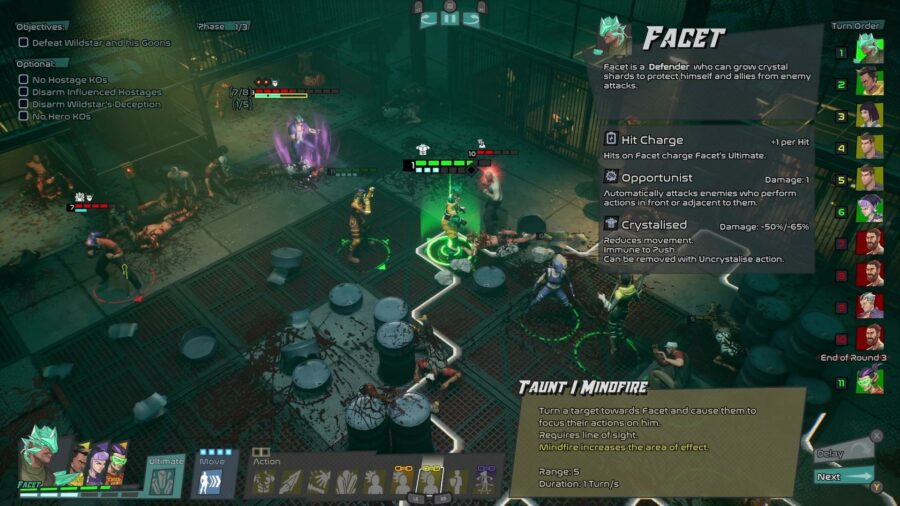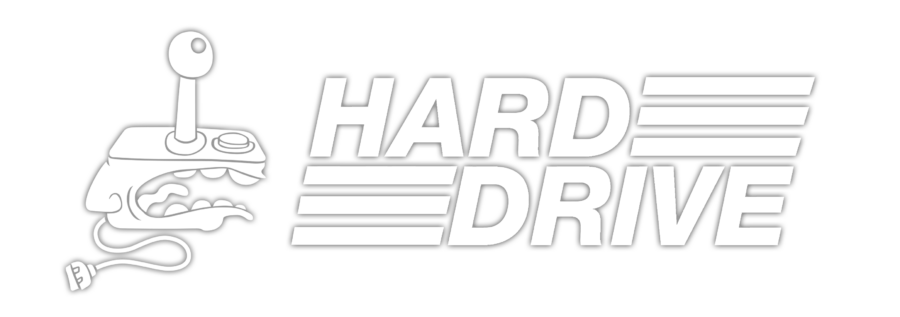Without looking, I assume that at least half the reviews for Capes used the phrase “superhero fatigue.” That might be its biggest problem: it came out a couple of years too late, after the MCU and DCU have run the genre through a cold-press juicer.
That being said, and to its credit, Capes is more of a reconstruction than anything else. It reminds me of Mark Waid and Alex Ross’s Kingdom Come with the generations flipped, where one of its major conflicts is built around the clash between a cynical ‘90s anti-hero and his more idealistic proteges.
Capes also reminds me of playing Dungeons & Dragons with a hungover sadist as the DM. It’s a strategy game in which the odds are always against you; your action economy is sharply limited, you’re given little room for error, and the game loves to drown you in waves of enemy reinforcements. Its developers have made an effort to address its problems, but my time with Capes so far has been punctuated by frustration.
20 years ago, King City was the superhero capital of the world, but then the villains won. 20 years later, they’ve gone corporate, and the “Company” rules King City with an army of masked goons. Anyone in town who develops super-powers, which is a weirdly common occurrence, gets abducted by Company mercenaries and is never seen again.
Doctrine is one of the last surviving superheroes from the old days, who’s stayed in King City for decades trying to find ways to strike back against the Company. One night, he finds and rescues two new superhumans: Facet is a law student who can generate strange green crystals, while Rebound is a cat burglar who can teleport. With no better options on the table, they become the first two recruits for Doctrine’s new team of anti-Company guerrillas, which the citizens of the city quickly nickname the Capes.

Mechanically, I have a laundry list of complaints about Capes that all come down to the same thing: it played like it was released too early. It was stable, and I had fun with a few missions, but it was in dire need of at least one good balance pass.
The version that I’ve been playing on Xbox feels like the developers were forced to go with their first stable build. Capes has never crashed or glitched out on me, but it’s got a lot of little problems that drag down the whole.
Primarily, it’s a question of artificial difficulty. There’s a real mismatch in Capes between what you’re capable of and what the game wants you to do, especially in its optional objectives. My run through the game on Normal was punctuated by huge waves of enemy reinforcements before I had any meaningful crowd-control abilities, stealth levels where I was routinely detected from all the way across the map, and boss fights with absolutely cracked damage output, all found in a game where you don’t get a real support character until roughly two-thirds of the way through. It does get better as you get more and weirder heroes on your roster, and you can pull off some truly decadent strategies in the mid-game, but the first couple of hours in Capes are a steep climb.
However, while I was writing this column, I discovered that most of my issues with Capes have been specifically addressed in a new patch that’s already out on Steam. It includes a couple of new difficulty levels, reshuffled objectives, a badly needed revamp to how stealth works, and specific tweaks to almost every mission. It’s one of the most sweeping reinventions of a released game that I’ve seen since No Man’s Sky, and I’m looking forward to seeing how Capes plays once that patch has been released for consoles.
Before I knew about the patch, I was going to say that I wanted to like Capes more than I did. It was clearly made for huge comic-book dorks by huge comic-book dorks, and as one of those dorks, it couldn’t help but hit me where I live.
There were two things that jumped out at me from the start. The first is that Capes isn’t a deliberate analogue for another universe. There are a lot of indie superhero comics that start with ersatz versions of the Justice League and/or Avengers – Invincible, The Boys, the first issue of Planetary, Gail Simone’s Leaving Megalopolis, etc – but Capes’ developers resisted that impulse. There are a few character parallels I could draw, but that has more to do with the flooded state of the genre than anything specific to Capes.

The second comes from Capes’ central conflict, which can be taken as an interesting metaphor for the evolution of the genre. Doctrine in particular is drawn to resemble an early Wildstorm character who’s gone to seed; picture John Lynch or Grifter after a decade-long whiskey bender.
From the start of the game, Doctrine wants the “Capes” to essentially be a paramilitary strike force in tights. He tries to dress it up with pragmatism, but Doctrine’s only real plan is to burn everything down and hope it leads to something better. There’s a real ‘90s sense of nihilism baked directly into the character.
Conversely, none of Doctrine’s pan-racial coalition of Capes are as ruthless or obedient as he wants them to be. Some are happy to wreck things, particularly Rebound, but most are some kind of idealist; they’ve got principles and they’re trying to figure out what might happen when and if they win. It parallels a lot of conversations I’ve seen and had about what superheroes actually stand for right now, by way of exploring a generational gap between eras of the medium.
That in turn makes Capes into a story that has some real resonance, especially on this particular week, where an old man’s inflexibility and cynicism is consistently a bigger problem than young people’s idealism and inexperience. In Capes, the kids are alright. It’s the adults who are the problem.




